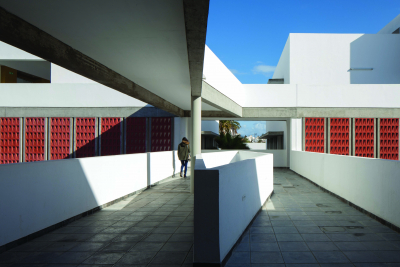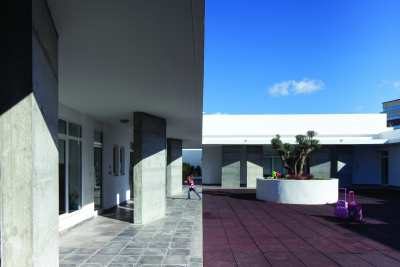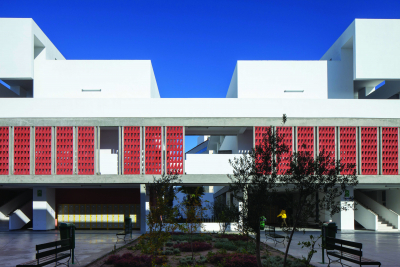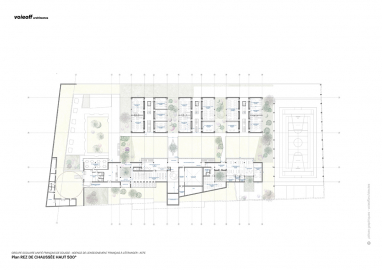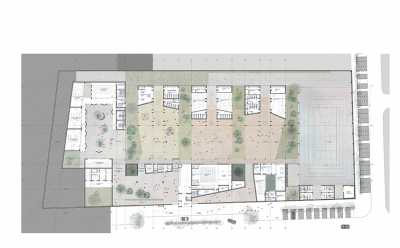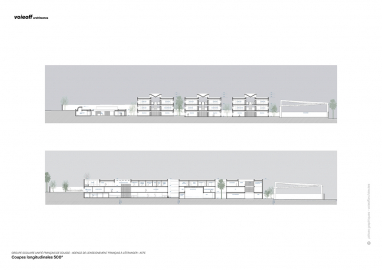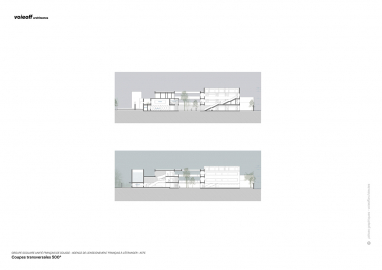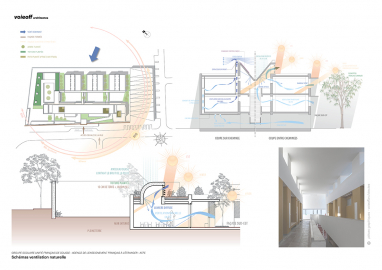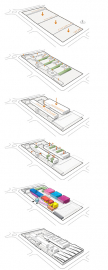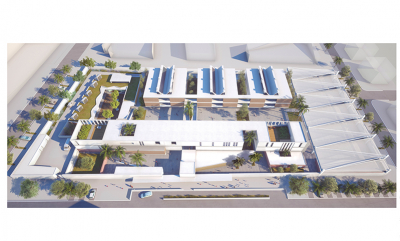School Campus Philippe Séguin
The project is a reinterpretation of Mediterranean architecture. Under the weight of heavy safety regulations, the architects proposed a real environmental arsenal airy, sunny and shady. The goal is to dissipate the feeling of evolving in a “fortress” where safety is the key word; They then propose an island, both isolated and alive.
The new French school establishment Philippe Seguin (school and college) freshly inaugurated in Sousse is a reinterpretation of Mediterranean architecture, resulting from the association and mixing of cultures of VOIEOFF ARCHITECTS, a French agency with very strong, friendly heart and professionals links with Tunisia since 1968 and L’ATELIER OSMOSE, an architectural firm based in Sousse. Under the weight of heavy safety regulations, the architects proposed a real environmental arsenal airy, sunny and shady. The goal is to dissipate the feeling of evolving in a “fortress” where safety is the key word; They then propose an «island», both isolated and alive.
Located near the boulevard Hamid el Ghazali which connects the city center of Sousse to the peripheral belt, the GSU is located in a new district in full development. Frames of open views to the sky take advantage of a still low urban landscape. While reinforcing the safety of the various spaces and particularly those outside, namely courtyards and covered areas, the design of volumes and their interweaving with the plant is part of an environmental approach optimizing ventilation and natural lighting thanks to solutions simple, sober, efficient and durable. The organization of the buildings, based on a deliberately low volume (garden level / upper ground floor / first floor) despite the relative cramped nature of the terrain, is intended to be very readable from the outside as well as from the inside, giving everyone a clear understanding of the program while respecting their objectives of fluidity and capacity for development. At each level, the plan is framed by the presence of patios providing natural light and ensuring the natural ventilation of the spaces: these patios capture the air on the ground floor and thus provide wooded areas at the entrances.
Double brick walls incorporating insulation, passive sun protection adapt buildings with temperature differences between seasons and are as essential elements of the traditional architecture Tunisian system. Atrium and gardens creates an in between: calm and light natural subdued atrium, freshness of wooded gardens open to ends whose shape promotes air circulation. This device promotes the natural ventilation system in place for all teaching places excluding any air conditioning: air intake in cool areas (gardens and courtyards, large ducts integrated into the supporting structure, extraction by turrets operated by wind).
The legibility of the concrete structure left raw, in which are inserted the brick walls (double walls incorporating the insulation) covered with a white plaster playing with the claustra designed and made specifically for the project forming passive solar protection of all traffic areas and large openings provide the desired unity for the entire establishment. The architectural expression favours the control of light and ambient air, the right balance, with the seasons, between passive solar protection and winter solar exposition.


